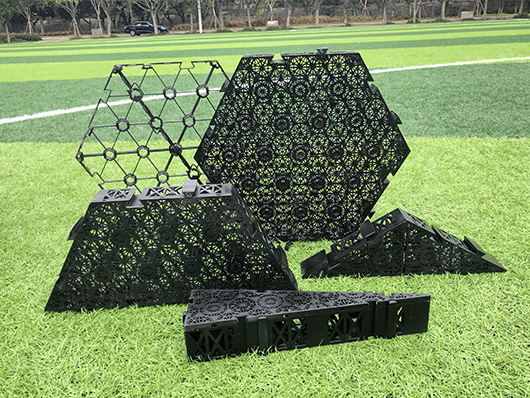Abstract: Drainage design has a great influence on shaping the overall landscape of residential areas. Starting from the existing problems of landscape drainage in urban residential areas, this article has a detailed analysis of the key points of landscape drainage design in residential areas, and expounds the precautions for landscape drainage in residential areas.

1.Introduction:
The importance of drainage to landscape is similar to the relationship between structure and architecture. Water accumulation may have lots of impact on roads, residential areas, green land, and garage. For example, it will affect the traffic of vehicles, pedestrians, roadbed safety, the lives of residents, the growth of vegetation, the structural safety of flood control facilities, safety of garage structure and so on.
In the past, when designing the landscape drainage system for residential areas, some of our landscape designers took too many suggestions from civil or water conservancy engineers who lacked the views of professional landscape designers, which sometimes resulted in over-functionalization, rough design of the drainage system, and incongruity with the overall landscape. In recent years, more and more landscape professionals have realized the importance of drainage design in shaping the landscape of residential areas. While solving the actual elevation drainage problem, they must not only meet the functional requirements of site drainage, but also better integrate the environmental quality with the overall landscape effect. The design for drainage engineering has more aesthetic or ecological value.
2. Landscape drainage design process of residential area
2.1 Data Collection
First of all, it is necessary to collect and organize the data of hydrology, geology, rainfall and other aspects of the area. Therefore, designers are able to understand the basic data of base elevation and drainage. At the same time, designers should check the plane layout, vertical design and distribution of rainwater pipelines in the corresponding area which is conducive to making a reasonable design and drainage layout. These basic data are very important for the drainage design of the site.
2.2 Management of surface runoff
Surface runoff is the flow of water occurring on the ground surface when excess rainwater, stormwater meltwater, or other sources, can no longer sufficiently rapidly infiltrate in the soil.
The main method of surface runoff management in residential areas is to use ecological purification means to collect rainwater scientifically and effectively. Residential area uses surface runoff purification systems and artificial wetlands, and put it into the artificial water system in residential areas after the water quality meets the discharge requirements. The artificial water system construction with the goal of surface runoff management is a landscape construction model that truly embodies the natural ecological ethics.
In the process of surface runoff collection, there are currently two main ways in China – road wetland rainwater collection and purification system and constructed wetland surface runoff purification system. Road rainwater enters the rainwater open ditch next to the road, flows through the rainwater purification tank, and is purified by the wetland plants and special mixed sand base in the system.
Constructed wetlands and constructed wetland islands (including constructed wetland floating islands) are the main manifestations of the surface runoff purification system, and are also the most effective means of water purification.
3. Design of water-permeable pavement materials with HOENSOEY Cells
The impermeable pavement on the site is prone to rainwater runoff, scouring, flooding, water pollution, and heat island effect. While the permeable pavement guides the surface runoff directly from the roadbed into the soil through the artificially paved porous pavement surface, thus ensuring the replenishment of groundwater.
HOENSOEY Technology provides ideal solutions for stormwater drainage. The new-developed product–HOENSOEY Cells (Water Storage Crates) are a new type of rainwater storage honeycomb units with ultra-high compression strength and unique buckles. They are a core component in shallow surface water treatment systems.
HOENSOEY stormwater modules play an important role in the beautification of the environment and the overall landscape effect of the residential area.

